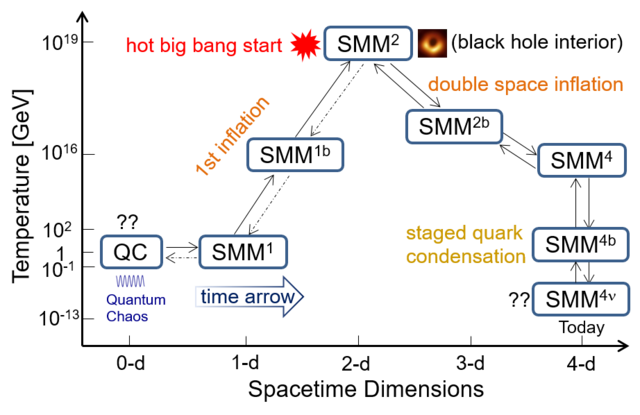Modern physics is pillared by Einstein’s theory of general relativity (that defines spacetime and the gravitational force) and the Standard Model as the best known quantum theory (that governs quantum particles and the other known interactions). Despite tremendous successes of the two theories and decades of more scientific efforts, there remains a wide range of puzzling phenomena in fundamental physics and the dream of unification of general relativity and quantum theory has never come true. The existence of the so-called “dark energy” and “dark matter” that dominate the Universe is still beyond our understanding. Even ordinary matter that makes up about 5% of the contents of the Universe, i.e., galaxies and stars, is full of unanswered puzzles. As a matter of fact, we don’t even know why galaxies and stars should exist in the first place as we don’t understand the mysterious imbalance between matter and antimatter. Other enigmatic questions include where the arrow of time comes from, how a massive star evolves and synthesizes elements, what the interior of a black hole looks like, how come we can observe ultrahigh energy cosmic rays that are supposed to be blocked by cosmic background radiation, what makes free neutrons decay differently than those in a trap, why neutrinos have so tiny masses or why they have masses at all, etc.
A mirror sector of the universe, while not a mainstream idea, has long been conjectured since Lee and Yang published their Nobel Prize-winning work on parity violation. This idea has just been fully developed into a new theoretical framework in a series of papers for consistently and quantitatively understanding all of the above-mentioned puzzles and more. The Universe is dynamic and so are the underlying physical models and spacetime via topological transitions. There exists no single unification theory of everything as conventionally pursued. As the 4-dimensional spacetime evolves dimension by dimension in the early universe, consistent yet different models emerge one by one with different sets of elementary particles and interactions. A new set of first principles are proposed for building these supersymmetric mirror models with new understanding of symmetries (e.g., supersymmetry and mirror symmetry) and dimensional transitions of spacetime. Gravity is understood as a purely classical phenomenon emergent from smooth spacetime after its inflation. The arrow of time is born under the 1-d model of ‘timeron’ field that starts the clock of the hot Big Bang. A black hole’s interior is explained to be truly two-dimensional in nature. The celebrated Standard Model is naturally extended with a mirror sector of particles sharing the same 4-dimensional spacetime.
The mirror particles are almost an exact copy of the ordinary ones participating in similar yet separate mirror interactions (i.e., mirror electromagnetic, weak, and strong forces). Nevertheless, both sectors share the same gravity, namely, the same stage of spacetime. The breakdown of mirror symmetry is so tiny (about one part out of one hundred trillion in mass splitting) but the effects are profoundly significant. Both tiny neutrino masses and dark energy (that dominates the Universe’s energy budget now) are originated from the mirror symmetry breaking. So are neutral particle oscillations, in particular, neutron (n-n’) and kaon (K-K’) oscillations that serve as the most important messengers between the two sectors. As it turns out, these oscillations provides natural explanations for many outstanding puzzles like origin of dark matter and matter-antimatter imbalance, stellar evolution, ultrahigh energy cosmic rays, neutron lifetime anomaly, and so on. Most intriguingly, concrete unique predictions and feasible experiments using current technology are ready to be tested in the laboratory. The new framework of supersymmetric mirror models and its presented coherent picture could be verified (or disappointingly falsified) in the near future.
See here for a more technical summary on the new mirror matter theory and also the technical papers.
See the schematic diagram below for supersymmetric mirror models evolving at various stages of the Universe.

